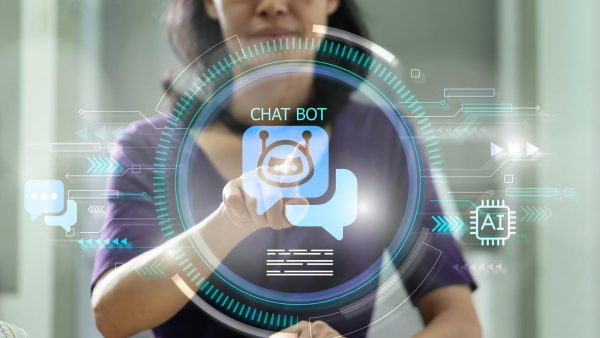Throughout history, similar concerns have arisen in response to technological progress. From the Industrial Revolution to the computer age, there has always been a fear that machines will replace human labour. However, the lesson that time has taught us is that it is not technology that causes job losses, but rather people’s inability to adapt to the changes it brings. Therefore, we can say that artificial intelligence in itself is not a threat. Rather, I believe it is an enormous tool that has the potential to transform our lives and professions if we know how to take advantage of it.
Artificial intelligence in the workplace
Before delving into the impact of artificial intelligence on the workplace, it is crucial to remember that AI is a fundamental part of the Digital Revolution that began decades ago and continues to transform our reality. According to numerous experts, it is estimated that there are still around 70 years to go before this revolution, which began 30 years ago with the advent of personal computers, microprocessors and the expansion of the Internet, is complete.
As we have mentioned, AI will not eliminate jobs, but it will change the landscape of work. Those who know how to harness its potential will be the leaders in this new era. Tools such as ChatGPT, machine learning algorithms and automation systems are already revolutionising entire industries. These technologies not only increase efficiency and reduce costs, but also create new opportunities: from data analysis to the design of personalised experiences, to completely new roles that did not even exist before.
Therefore, the real challenge lies not in AI itself, but in our willingness to learn and adapt. Traditional skills are no longer enough; today, we need a flexible mindset, a willingness to learn constantly, and the ability to integrate new tools into our daily work. It is not AI that will displace professionals, but those who understand how to use it to be more efficient, creative, and strategic.
Furthermore, it is important to bear in mind that artificial intelligence cannot replace essential human skills such as critical thinking, empathy or creativity. These are qualities that no machine will ever be able to fully replicate. Therefore, the future of work will not be a battle between humans and machines, but rather a collaboration between the two. Those who manage to combine their human capabilities with the advantages of technology will be the real winners.
In the end, the greatest risk lies not in automation or technological advances, but in falling behind while others progress. In this new era driven by artificial intelligence, success will be determined by our ability to coexist with these tools, harness their potential to the fullest, and use them as allies to grow both professionally and personally. The key is not to fear artificial intelligence, but to learn to master it before others do it for us.
The Industrial Revolution as an example of transformation
During the Industrial Revolution, the disappearance of certain jobs was inevitable. However, new job opportunities and industrial sectors emerged in parallel with this historic transformation. There were moments of conflict and changes in contractual and social models that were part of the adaptation process. However, as has happened throughout history, humanity moved towards a better future, with a positive impact on the world of work.
The Industrial Revolution of the 18th century marked a radical change in the economy and society of the time. The incorporation of technological advances such as the steam engine and the mechanical loom led to a dramatic increase in productivity, which in turn led to the emergence of new industrial areas. Despite initial concerns about the possible replacement of workers by machines, at the end of this process there was an increase in job opportunities in fields such as factory management, logistics and industrial machinery maintenance.
Among the most notable achievements of this revolution are:
Increased productivity
The introduction of machines such as the spinning jenny and the power loom led to a 300% increase in textile production between 1760 and 1850, resulting in lower manufacturing costs and greater availability of essential products for a large part of the population.
Advances in transport and infrastructure
One of the most significant milestones was the construction of more than 8,000 miles (12,800 km) of railways in the United States by 1860. This transformed trade by connecting markets and creating jobs related to the construction, operation and maintenance of the railway system.
The emergence of new industries
Steel production experienced astonishing growth during this period, from 77,000 tonnes in 1870 to 11 million tonnes by 1900. This growth in industry generated millions of direct and indirect jobs in areas such as construction and transport.
Continuous technological innovation
The Industrial Revolution laid the foundations for an era of continuous technological innovation in which the development of the steam engine not only powered factories but also ships and trains, thus creating new industries that demanded skilled labour.
These historical milestones show how technological change can create more jobs than it initially eliminates. Similarly, artificial intelligence has the potential to drive emerging industries and create specialised jobs that we cannot yet conceive.
How AI-driven automation is creating additional job opportunities
If we focus on AI-driven automation, we can see similarities to what happened during the Industrial Revolution: technology is changing the job landscape by automating repetitive tasks and creating new opportunities. This evolution gives workers the chance to engage in more creative and strategic tasks, while increasing the demand for highly specialised professionals.
According to the World Economic Forum, despite projections indicating the possible loss of 85 million jobs by 2025 due to automation, 97 million new jobs are also expected to be created, resulting in a net gain of 12 million jobs worldwide. Among these new profiles are specialists in human-AI collaboration, artificial intelligence trainers and data scientists specialising in machine learning. In the healthcare sector, for example, the introduction of AI-based diagnostic tools has led to new roles such as ‘AI integration experts in radiology’ and ‘medical instructors for AI’, resulting in a 15% increase in specialised jobs that pay 30% to 40% more than the positions they replace.
Today, automation through artificial intelligence not only replaces repetitive tasks, but also stimulates economic development by creating more specialised jobs with higher salaries.
Increasing business efficiency
Companies such as Unilever have used Microsoft Copilot to automate both administrative and creative tasks and have achieved a significant reduction in the time required to prepare marketing campaigns, enabling them to be launched more quickly and efficiently. After nine months of implementation, a 23% increase in productivity has been achieved.
Automation in conventional areas
In the automotive industry, AI-powered robots have been implemented to improve assembly lines and ensure the quality of the final product. This measure has not only generated significant cost savings, but has also created greater demand for professionals specialising in the maintenance and programming of automated robots. According to recently updated information, these technologies have resulted in an increase of up to 30% in production while reducing errors attributable to human factors.
To give a practical example, DHL improved its shipping management by using UiPath (a robotic process automation tool), which allowed them to streamline routine tasks and achieve faster deliveries while significantly reducing operating costs.
Change in administrative tasks
In the financial sector, banks such as Raiffeisen Bank International have opted to use ChatGPT-based systems to automate routine tasks such as legal and banking document management. This has given employees more time to focus on strategic activities and build relationships with customers, thereby enhancing both efficiency and excellence in their work performance.








